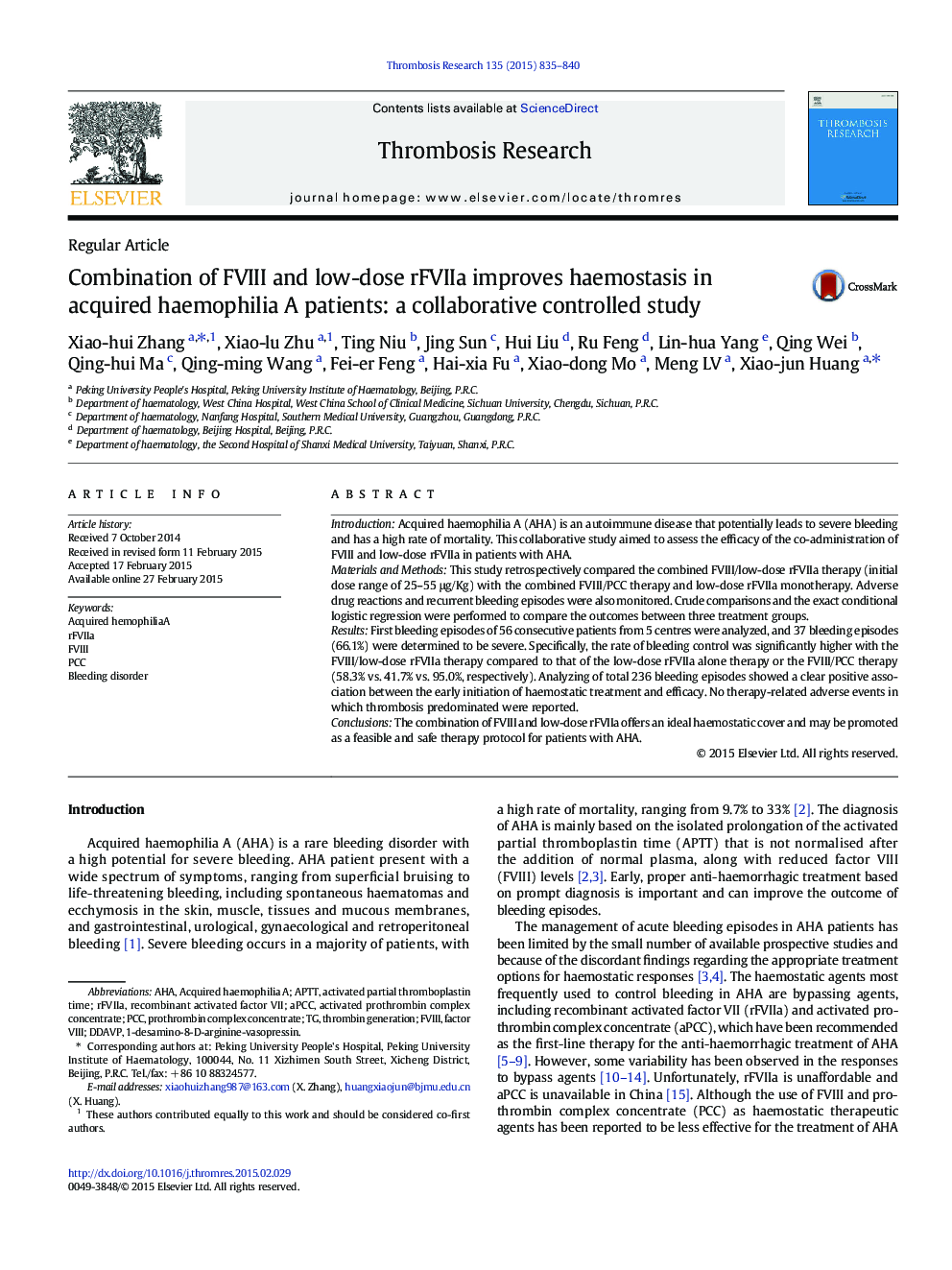| Article ID | Journal | Published Year | Pages | File Type |
|---|---|---|---|---|
| 6001554 | Thrombosis Research | 2015 | 6 Pages |
â¢Combined FVIII/low-dose rFVIIa therapy improved haemostasis in AHA.â¢Early initiation of haemostatic treatment was associated with better responses.â¢No therapy-related adverse events in which thrombosis predominated were reported.
IntroductionAcquired haemophilia A (AHA) is an autoimmune disease that potentially leads to severe bleeding and has a high rate of mortality. This collaborative study aimed to assess the efficacy of the co-administration of FVIII and low-dose rFVIIa in patients with AHA.Materials and MethodsThis study retrospectively compared the combined FVIII/low-dose rFVIIa therapy (initial dose range of 25-55 μg/Kg) with the combined FVIII/PCC therapy and low-dose rFVIIa monotherapy. Adverse drug reactions and recurrent bleeding episodes were also monitored. Crude comparisons and the exact conditional logistic regression were performed to compare the outcomes between three treatment groups.ResultsFirst bleeding episodes of 56 consecutive patients from 5 centres were analyzed, and 37 bleeding episodes (66.1%) were determined to be severe. Specifically, the rate of bleeding control was significantly higher with the FVIII/low-dose rFVIIa therapy compared to that of the low-dose rFVIIa alone therapy or the FVIII/PCC therapy (58.3% vs. 41.7% vs. 95.0%, respectively). Analyzing of total 236 bleeding episodes showed a clear positive association between the early initiation of haemostatic treatment and efficacy. No therapy-related adverse events in which thrombosis predominated were reported.ConclusionsThe combination of FVIII and low-dose rFVIIa offers an ideal haemostatic cover and may be promoted as a feasible and safe therapy protocol for patients with AHA.
